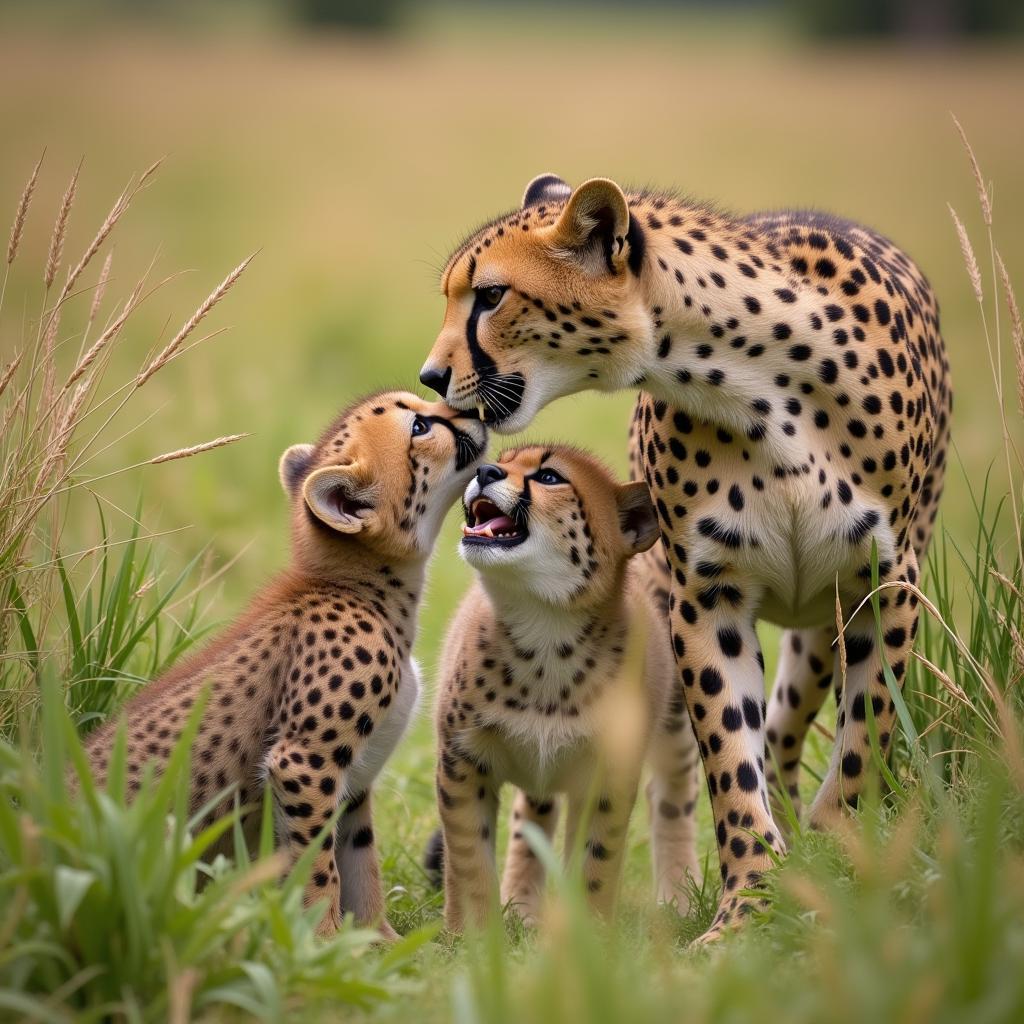East African Cheetah: The Fastest Cat in the Savanna
The East African Cheetah, a majestic predator, reigns supreme in the vast savannas of East Africa. This article delves deep into the world of these incredible creatures, exploring their unique characteristics, habitat, diet, social behavior, and the conservation challenges they face. We will uncover fascinating details about their speed, hunting techniques, and the crucial role they play in the delicate balance of the East African ecosystem.
The Speed and Agility of the East African Cheetah
The East African cheetah (Acinonyx jubatus jubatus) is renowned for its lightning speed, the fastest land animal on Earth. They can accelerate from 0 to 60 mph in just three seconds, reaching top speeds of up to 75 mph in short bursts. This incredible speed is a result of their streamlined body, long legs, flexible spine, and specialized paws with semi-retractable claws that provide excellent traction. Their large nostrils and lungs allow them to take in vast amounts of oxygen, fueling their high-speed pursuits. Their keen eyesight also plays a crucial role, allowing them to spot prey from a distance. These physical adaptations make the East African cheetah a formidable hunter, perfectly suited to the open grasslands of the savanna. Did you know that cheetahs can even change direction mid-stride while running at full speed?
 East African Cheetah running at full speed in the savanna
East African Cheetah running at full speed in the savanna
Planning your next adventure? Discover incredible wildlife experiences with an African safari wildlife park.
Habitat and Diet of the East African Cheetah
East African cheetahs primarily inhabit the savannas and grasslands of countries like Kenya, Tanzania, and Uganda. They prefer areas with open terrain that allow for high-speed chases. Their diet consists mainly of gazelles, impalas, and other small to medium-sized ungulates. They are diurnal hunters, meaning they are most active during the day. Cheetahs rely on their speed and agility to ambush their prey, using a short, intense chase to bring them down. Once they have caught their prey, they quickly consume it to avoid losing it to larger predators like lions and hyenas.
Social Behavior and Reproduction
Unlike other big cats, cheetahs are generally solitary animals, except for mothers with cubs. Males often form coalitions, typically consisting of brothers, who cooperate to defend territories. Females give birth to litters of up to six cubs, which they raise alone. Cubs stay with their mothers for 18-24 months, learning essential hunting and survival skills before venturing out on their own. The bond between mother and cub is incredibly strong, and the mother plays a crucial role in teaching her cubs how to navigate the challenges of the savanna.
 East African Cheetah mother with cubs
East African Cheetah mother with cubs
Looking for the perfect African getaway? Learn more about African holidays January.
Conservation Challenges and Efforts
East African cheetahs face several threats, including habitat loss due to human encroachment, poaching, and competition with other predators. Their numbers have been declining steadily, making them a vulnerable species. Conservation efforts are crucial to ensure the survival of these magnificent animals. These efforts include protecting their habitat, combating poaching, and implementing programs to mitigate human-wildlife conflict. Organizations like the Cheetah Conservation Fund are working tirelessly to protect cheetahs and their ecosystem.
What are the main threats to the East African Cheetah?
The main threats are habitat loss, poaching, and competition with other predators.
Curious about African wildlife? Explore more about African wildlife. Perhaps you’re interested in learning about African big game animals?
Conclusion
The East African cheetah is a remarkable animal, perfectly adapted to its environment. Protecting these incredible creatures is essential for maintaining the biodiversity of the East African savanna. By understanding the challenges they face and supporting conservation efforts, we can help ensure that future generations will have the opportunity to witness the breathtaking speed and grace of the East African cheetah.
FAQ
- How fast can an East African cheetah run? They can reach speeds up to 75 mph.
- What do East African cheetahs eat? Their diet mainly consists of gazelles, impalas, and other small to medium-sized ungulates.
- Where do East African cheetahs live? They primarily inhabit the savannas and grasslands of East Africa.
- Are East African cheetahs endangered? They are classified as a vulnerable species.
- What are the main threats to East African cheetahs? The main threats are habitat loss, human-wildlife conflict, and poaching.
- What is being done to help conserve East African cheetahs? Conservation efforts include habitat protection, anti-poaching patrols, and community engagement programs.
- How long do cheetah cubs stay with their mother? They typically stay with their mother for 18-24 months.
Common Scenarios and Questions
- Scenario: Witnessing a cheetah hunt in the wild. Question: How do cheetahs use their speed and agility to catch prey?
- Scenario: Learning about cheetah conservation. Question: What can I do to help protect East African cheetahs?
- Scenario: Visiting a wildlife sanctuary. Question: What are the challenges of raising cheetah cubs in captivity?
Further Exploration
Looking to delve deeper into the world of African wildlife? Check out these related topics: cheetah adaptation, savanna ecosystem, human-wildlife conflict, and wildlife conservation in Africa. You can also find more information about the different subspecies of cheetahs.
For any inquiries or assistance planning your African adventure, please contact us: Phone: +255768904061, Email: kaka.mag@gmail.com, or visit us at Mbarali DC Mawindi, Kangaga, Tanzania. Our customer service team is available 24/7.

